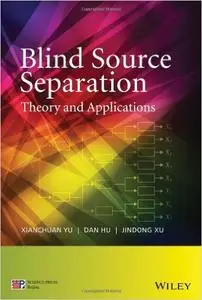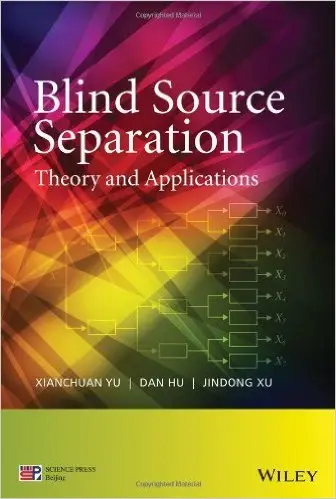Blind Source Separation: Theory and Applications by Xianchuan Yu , Dan Hu
English | 2014 | ISBN-10: 1118679849 | 392 pages | PDF | 96 MB
English | 2014 | ISBN-10: 1118679849 | 392 pages | PDF | 96 MB
A systematic exploration of both classic and contemporaryalgorithms in blind source separation with practical casestudies
The book presents an overview of Blind Source Separation, arelatively new signal processing method. Due to themultidisciplinary nature of the subject, the book has been writtenso as to appeal to an audience from very different backgrounds.Basic mathematical skills (e.g. on matrix algebra and foundationsof probability theory) are essential in order to understand thealgorithms, although the book is written in an introductory,accessible style.
This book offers a general overview of the basics of BlindSource Separation, important solutions and algorithms, and in–depthcoverage of applications in image feature extraction, remotesensing image fusion, mixed–pixel decomposition of SAR images,image object recognition fMRI medical image processing, geochemicaland geophysical data mining, mineral resources prediction andgeoanomalies information recognition. Firstly, the background andtheory basics of blind source separation are introduced, whichprovides the foundation for the following work. Matrix operation,foundations of probability theory and information theory basics areincluded here. There follows the fundamental mathematical model andfairly new but relatively established blind source separationalgorithms, such as Independent Component Analysis (ICA) and itsimproved algorithms (Fast ICA, Maximum Likelihood ICA, OvercompleteICA, Kernel ICA, Flexible ICA, Non–negative ICA, Constrained ICA,Optimised ICA). The last part of the book considers the very recentalgorithms in BSS e.g. Sparse Component Analysis (SCA) andNon–negative Matrix Factorization (NMF). Meanwhile, in–depth casesare presented for each algorithm in order to help the readerunderstand the algorithm and its application field.
A systematic exploration of both classic and contemporaryalgorithms in blind source separation with practical casestudies
Presents new improved algorithms aimed at differentapplications, such as image feature extraction, remote sensingimage fusion, mixed–pixel decomposition of SAR images, image objectrecognition, and MRI medical image processing
With applications in geochemical and geophysical data mining,mineral resources prediction and geoanomalies informationrecognition
Written by an expert team with accredited innovations in blindsource separation and its applications in natural science
Accompanying website includes a software system providing codesfor most of the algorithms mentioned in the book, enhancing thelearning experience
Essential reading for postgraduate students and researchersengaged in the area of signal processing, data mining, imageprocessing and recognition, information, geosciences, lifesciences.
My nickname - interes



